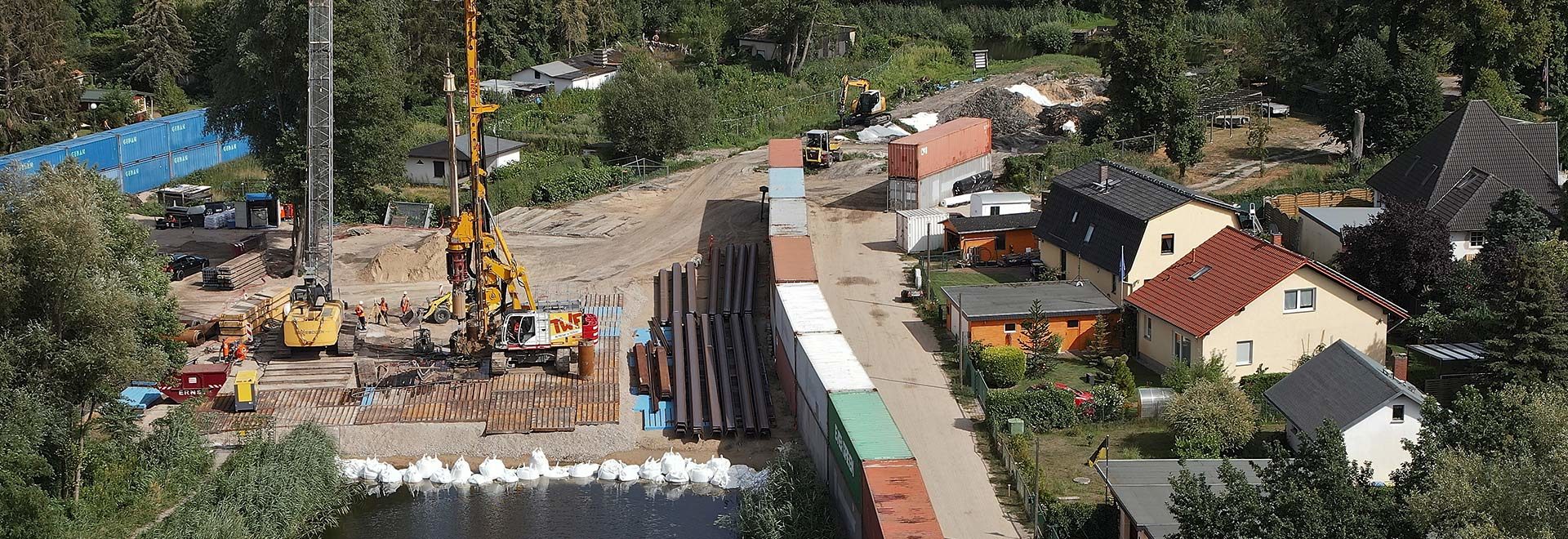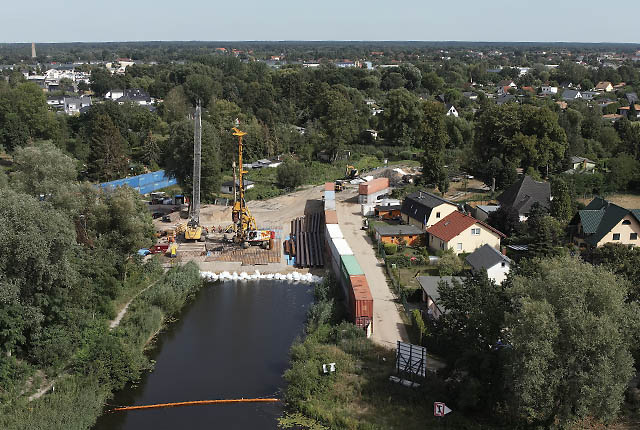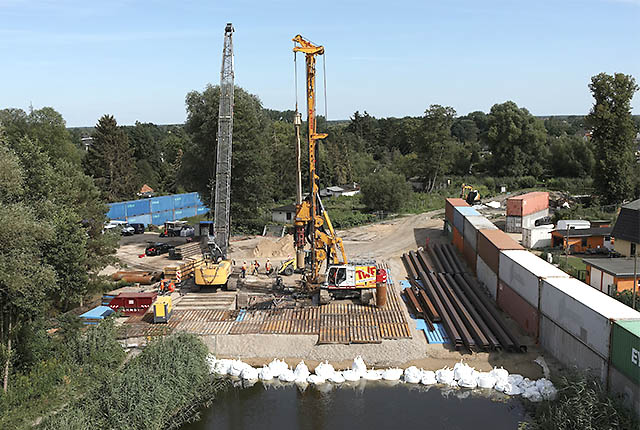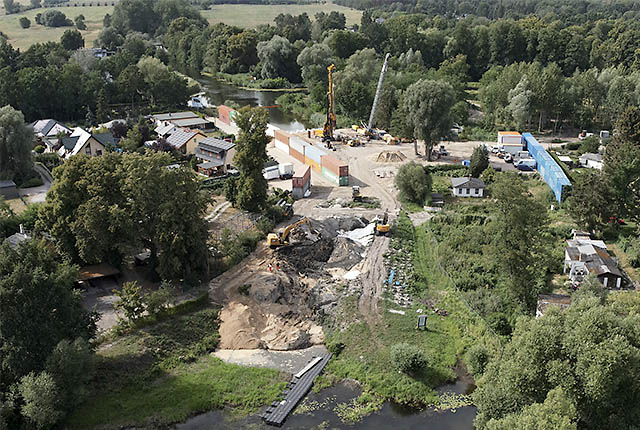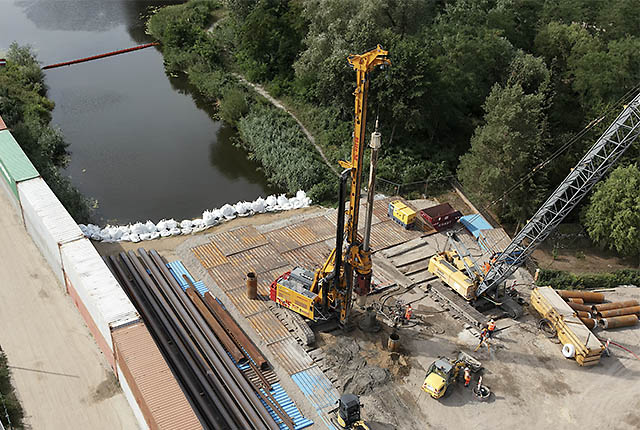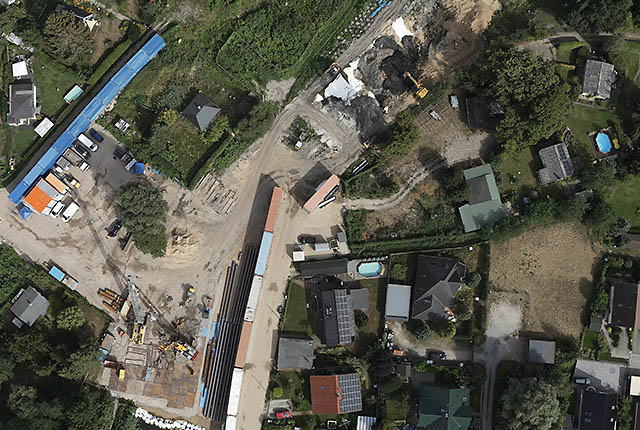Kristina Kaestner, Specialist Planner for Explosive Ordnance Clearance at Boskalis Hirdes, says that the real challenge with this project was to safely expose the 200+ kg unexploded ordnances.
”The UXOs were buried ten meters below the surface, exactly between the river and the location of the sluice,” Kaestner sets the scene.
“To ensure that our colleagues would have a safe workplace around the two explosives, we put cofferdams, with special sheet piles, in the river in which the new Friedenthaler sluice will be located.”
The area inside the cofferdams was still filled with water, and, therefore, 800 cubic meters of water were pumped, each hour, from the cofferdams into the river. This way, the groundwater level was kept artificially very low, allowing the Boskalis Hirdes professionals to get in and clear the explosives.
According to Kaestner, there were other safety issues to consider, as well. “Another measure was that the local police cordoned off a one square kilometer area around the project site and evacuated around 2,800 people, in case something went wrong,” she describes the take-no-risks operation.
Everything, however, worked like a charm. After the explosives were released by Boskalis Hirdes, a specialist for Unexploded Ordnance Disposal (EOD Services) disarmed and removed the explosives.
According to Kaestner, the Boskalis Hirdes UXO team was involved in the case, since the company has experience dealing with UXOs at great depths (up to 10 meters) which requires groundwater lowering systems.
“Despite all of the aforementioned challenges, the project was an astounding success. We are extremely proud of what we achieved in Oranienburg,” she concludes.
